Normandy to Mont-Saint-Michel: A 6-Day Northern France Road Trip Itinerary Full of History & Coastal Beauty
Honfleur
Explore Normandy’s Coastline: A 6-Day Northern France Road Trip from Fécamp to Saint-Malo
This road trip was hands down one of our favorites. Northern France has so much incredible beauty and history. We loved exploring this picturesque region and continually reflect back on how much this road tripped offered. Over those amazing 10 days we experienced culture and history spanning a thousand years while enjoying the lovely northern coast and Loire valley.
This travel guide dives into the first half of our unforgettable 10-day road trip through northern France, focusing on days 1 through 6. From dramatic seaside cliffs to moving WWII memorials and charming medieval towns, this route from Fécamp to Saint-Malo is packed with history, beauty, and local flavor. Here's everything you need to know to follow in our footsteps. We hope you enjoy the journey as much as we did!
Things to Know Before You Go:
When to Visit: Late spring and early fall offer fewer crowds, pleasant weather, and stunning landscapes. If you want to experience the Normandy beaches around the reflection and celebration period (the D-Day anniversary is June 6th), be sure to come in late May to 4th of July. If you want to experience laying at the beaches, be sure to visit in July and August.
Transportation: Renting a car is essential for flexibility, especially when exploring smaller towns and historic sites. While tours are an option, we would recommend venturing on your own. If you do decide to take a tour, we recommend finding a D-Day tour either from Bayeux, Caen, or Paris.
Language Tip: Basic French phrases go a long way. Most tourist areas speak some English, but locals appreciate the effort.
Driving Notes: Watch out for toll roads and make sure your GPS is updated for rural routes. We like Google Maps the best and strongly recommend downloading offline maps. Also consider using Waze when driving around. Also friendly reminder for any Americans, driving speeds are in kilometers. Be sure to find a local SIM card or purchase an eSIM (such as through airalo) to help ensure you have network coverage while driving.
Cash: We would definitely recommend bringing cash. If you take any toll roads you might need cash to pay the toll. Euros are also good to have on hand if you plan to do any shopping at local shops.
Plug & Socket Type: Type C - the Europlug, if you are coming from the USA or Canada, you will need a plug adapter.
On the cliffs in Etretat
Detailed Itinerary from Fécamp to Saint Malo (Days 1–6):
This itinerary is very accessible from a variety of major European cities. Paris is the closest major city and airport, but you could also start this road trip from Frankfurt, Brussels, Amsterdam, or London. While we started our road trip from Frankfurt, Germany, we would recommend starting this trip from Paris.
Day 1: Arrival in Fécamp
Total Driving Time: 7.5 Hours
Hotel: Hôtel Le Grand Pavois
We arrived in Fécamp in the late afternoon and spent our first evening strolling the pebble beaches and basking under the large white cliffs. The beach was a great place to relax and slowly meander, listening to the crashing waves. This first day was mostly about the drive, driving through the beautiful rolling hills of France. The majority of our day was spent driving from Frankfurt, Germany to Fécamp, France, roughly a 7.5 hour drive. If you are driving from Paris, your travel time will be closer to 2.5 hours which will give you much more time to explore on your first day.
Sculptures in Fécamp
Day 2: Fécamp & Étretat
Total Driving Time: 60 minutes round trip
Hotel: Hôtel Le Grand Pavois
On our first full day, we started out by grabbing a quick breakfast and wandering around the beautiful beaches and harbor of Fécamp. After strolling around the waterfront promenade and harbor taking in the views of the English Channel, we took the route called Sent. aux Matelots. From here we walked up to the Chapelle Notre-Dame du Salut. This beautiful Chapel was built in the 13th and 18th centuries and is a great chapel to explore. From the chapel we took the path around the cliffs to marvel at the old World War II bunkers and batteries. While wandering the path, there are amazing views of the English Channel and the Fécamp harbor. Definitely consider bringing a lightweight wind jacket as the wind can be gusty at the top of the cliffs.
After grabbing lunch downtown, we visited the Palais Bénédictine. The Palais Bénédictine is a beautiful 19th century neo-gothic and neo-renaissance palace. This distillery and bar offers tours of the palace and a tasting of the famous Bénédictine liqueur. There are several different tours (starting at 20 Euros) that you can take to explore both the palace as well as the distillery (you can opt not to do a tasting). The Bénédictine liqueur is very light (think sweet and herbal) and is unique to this area. After our tour, we spent a little time walking around downtown Fécamp before heading to Étretat.
In the early afternoon, we made the 20 minute drive to beautiful Étretat. Étretat is most well known for its beautiful white cliffs and dramatic sea arch. The town of Étretat offers a charming boardwalk area with plenty of restaurants and shops. Right off the promenade lays a great beach (rocky beach area), where one can relax, eat a snack, and take in the beautiful ocean and cliff views. Our favorite part about Étretat was hiking the cliffs for views of the iconic rock arches. There are a handful of hiking trails, each offering dramatic views of the rugged cliffs. Along the hiking trail there are several placards explaining the historical aspects of Étretat including the defensive wall (figuratively speaking) created by the Germans to prevent an Allied invasion of occupied France. Be sure to give yourself plenty of time ( we would recommend at least 3-4 hours) to explore the beautiful cliffs. After hiking and exploring, we stopped in one of the restaurants in town before driving back to our hotel in Fécamp.










Day 3: Fécamp to Arromanches-les-Bains (via Honfleur & Bayeux)
Total Driving Time: 2 hours and 45 minutes
Hotel: Les Villas d'Arromanches, Les Collectionneurs
Stop 1: We started our day driving an hour from Fécamp to the lovely town of Honfleur. Honfleur is and was one of our favorite small French towns to visit. The picturesque harbor surrounded by the imposing half-timbered buildings with wide walking paths made for a great day of exploring. We loved all of the outdoor cafes and restaurants many of which had great views of the harbor. We especially enjoyed wandering through the alley ways and streets. The town is quentissential France with timber buildings lined with potted flowers and tons of shops and boutique stores to explore. Ash found plenty of boutiques to explore and particularly enjoyed the art stores. We encourage you to really take in the beautiful half-timbered houses with their different colored potted plants. One of the highlights to explore in the town is the all-timber church from the 15th century, Église Sainte Catherine. This church is very unique and makes you feel like you are transported back to medieval France. It is absolutely worth a visit.
Pro-tip: Parking can be a little hard to find, so try to get to the town earlier in the day if you can. The easiest place to park in Honfleur is right across from the harbor/port at the parking lot east.
Stop 2: After enjoying the charming town of Honfleur for half a day, we drove to the town of Bayuex about an hour and twenty minutes away. Bayuex is a beautiful town with the tranquil River Aure running through it. Bayuex has a quaint river walk with paths and parks lining the river banks. We really enjoyed wandering around the river and through the town enjoying the beautiful French architecture. We first stopped at the Cathédrale Notre-Dame de Bayeux located right in the heart of the city. This beautiful 11th century gothic church is a must visit with it’s big stain glass windows and towering ceiling. The cathedral is free to visit and is self paced, giving you plenty of time to explore for as long as you like.
The highlight and the main reason for our stop over in Bayeux was to see the legendary UNESCO Memory of the World program registered 11th-century tapestry. The Bayeux tapestry is massive, stretching 70M (230 feet) long! This original tapestry is well preserved in the Bayeux Museum and tells the story of the Norman conquest of England following the Battle of Hastings. This tapestry was believed to be created to tell the story to peasants or citizens that were unable to read. The tapestry is broken into different scenes each depicting a scene before, during, and after the Battle of Hastings. The museum does a fantastic job explaining the significance of each section of the tapestry. You can just imagine being one of those citizens one thousand years ago admiring the story this tapestry tells. This museum is a must do if you are visiting Bayeux.
Stop 3: After our stop over in Bayeux, we made our 20 minute journey to our accommodation in Arromanches-les-Bains. We stayed at the beautiful Hôtel Les Villas d'Arromanches, only a 5 minute walk to the small town and to the beaches. We really enjoyed this villa style hotel. The hotel sits back in the property, making you feel secluded from the rest of the town. The hotel has a beautiful outdoor space to relax, grab a drink, and take in the green space around you. We found the rooms to be very upscale and were a great quiet place to relax.
Note: You have plenty of options in this area of Normandy to stay. We decided to move each night traveling further west each day, however if you prefer to stay in one place and explore from a home base or central location, staying in Bayuex is a great option. Bayuex has plenty of restaurants, bars, and some nightlife to explore and is very close to many of the main Normandy D-Day beaches, museums, and sights. If a bigger city is more of your feel, then you can opt to stay at the much larger city of Caen, but Caen will add an additional 30 minutes each way on to our driving time to get to the main Normandy sights. Just something to keep in mind. There are also tours you can consider from either city: Bayeux or Caen.
If you prefer to stay in Bayuex we would recommend staying at:
If you prefer to stay in Caen, we would recommend staying at:
Otherwise, Arromanches-les-Bains is a very cool little town to explore with a few restaurants right along the water, including some great seafood!














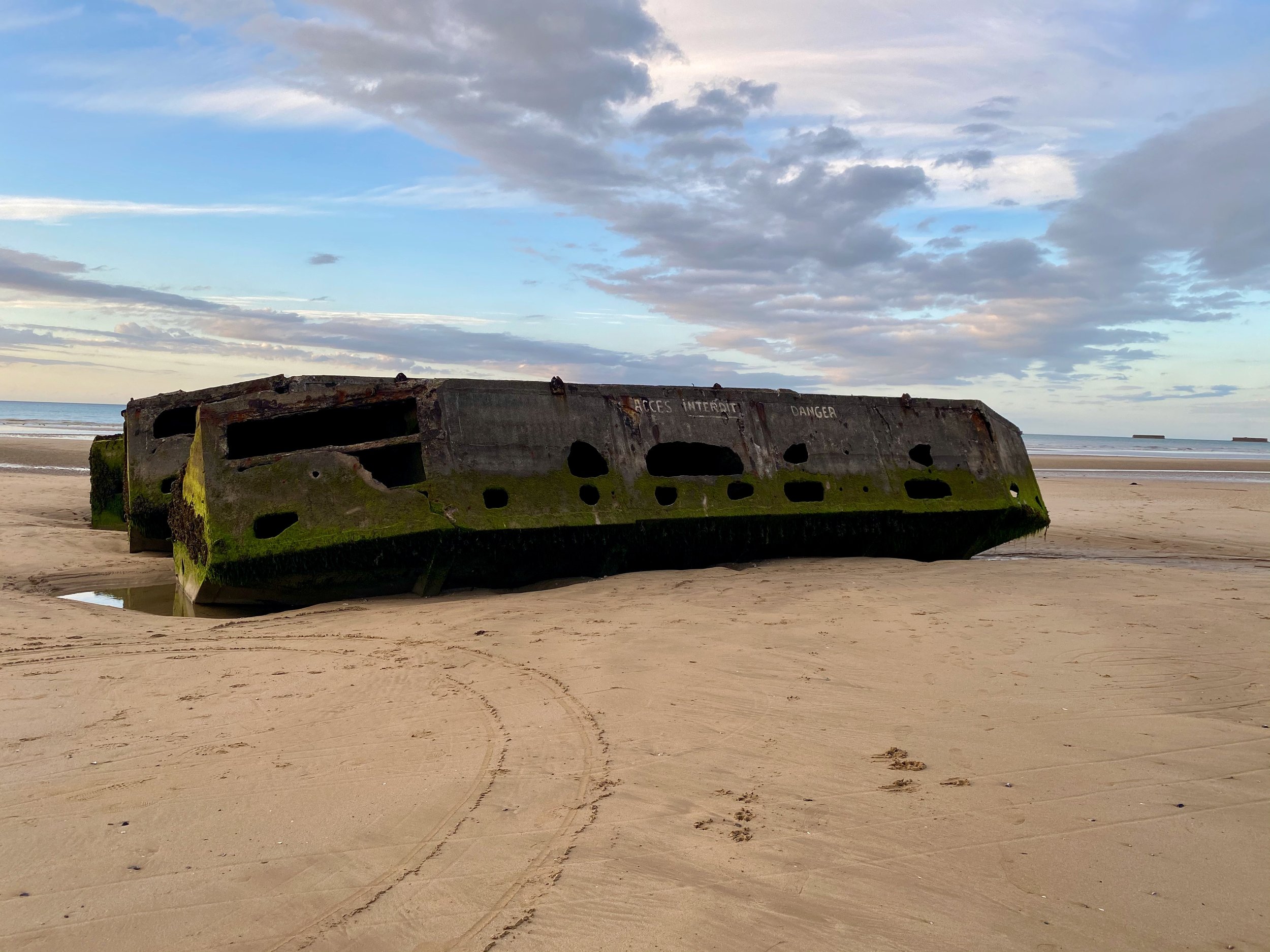

Day 4: D-Day History Tour
Total Driving Time: 1 hour and 45 minutes
Hotel: Chambres d'hôtes Les 4 Vents Pointe du Hoc - Landing Beaches
We started our day by exploring Arromanches-les-Bains . One of the coolest things about this town, aside from the picturesque view of the ocean, is the remnants of WWII Mulberry Harbour that are still marooned on the beach and out to sea. If you are interested in WWII history this area has a fascinating history. This was the only artificial port that survived, once the Allies landed on June 6th, 1944. Mulberry Harbour became a major transport hub and allowed some 9,000 tons of materiel per day to be transported into France. The relics of WWII are everywhere in the town, from the large displays of artillery and transport equipment to the very transport vessels from over 80 years ago still sitting on the beaches. While not our favorite WWII museum in the region, if you are interested in the logistics side of WWII, the Musée du Débarquement (D-Day Landing Museum), is worth a visit. This museum explain the D-Day invasion plans and explains how the Allies built artificial harbors on the Normandy beaches, and how Mulberry Harbour was the only one to survive due to storms. Without this important harbor and the amazing work of the engineers and logisticians, the Allies could have been in a tough spot in their attempt to free France. If you have some time, check out Arromanches-les-Bains and the Musée du Débarquement.
Stop 1: We drove west about 10 minutes to walk through the German bunkers that still stand at Batterie de Longues-sur-Mer (plenty of parking available). This is a very well preserved site and contains many German bunkers and artillery showcasing the sophistication of the German coastal defense. This entire area stands as an eerie reminder of the war. You are welcome to walk around the battery or you can opt to take a one-hour paid guided tour to learn more about this history of German coastal defense battery.
Stop 2: For our next stop we drove 20 minutes west to pause and reflect at the Normandy American Cemetery. The cemetery is a great reminder of the sacrifices that many Americans and its Allies made. Take some time to pause, reflect, and wander the grounds.
Stop 3: After reflecting at the cemetery, we made the 5 minute drive to the Overlord Museum. This museum is dedicated to the allied landings in 1944 and showcases many different exhibits including tanks, guns, planes, and some various scenes from the D-Day invasion. This museum is definitely worth a visit and has a huge collection displayed.
Stop 4: After a brief stop at the Overlord Museum, we made our way (only a 5 minute drive away) to Omaha Beach. Omaha Beach was one of the 5 Allied Landing sites (1 of 2 of the American landing sites). The main purpose of invading this area was to create a bridgehead to allow for subsequent landings of troops and to connect the British and Canadian landing sites with the American landing sites. Take some time to wander the beach and take in the natural beauty while also reflecting on the sacrifices made during the D-Day invasion. There are plenty of monuments and plaques explaining the significance of this beach and the sacrifices made. Be sure to check out the memorial museum if you have some time.
Note: If you haven’t eaten yet, there are a few restaurants and food trucks around near the beach and the memorials if you want to grab a quick bite to eat or sit down and enjoy the beach views.
Stop 5: After Omaha Beach, we made our way 35 minutes west to the famous town of Sainte-Mère-Église. Sainte-Mère-Église, was the first town liberated by Allied forces on D-Day and has been popularized in films such as The Longest Day. During the morning of the Allied D-Day invasion the U.S. 82nd and 101st Airborne divisions parachuted around this area and liberated the town. Famously, a paratrooper’s parachute got stuck on the Church of Sainte-Mère-Église. Be sure to stop into the church - as one of the stained glass windows depicts the paratrooper stuck on the top of the church. After wandering around this beautiful quaint town, don’t miss a visit to the Airborne Museum. The Airborne Museum was one of our absolute favorites on this trip and one of our favorites that we have visited in general. The museum does an amazing job of telling the story of the airborne D-Day invasion. One of the most memorable experiences is walking through a mock up C-47 that makes you feel like you were one of the paratroopers about to drop into France on D-Day. An absolutely impressive display. There are a ton of other displays including numerous aircraft and tanks. If you only visit one WWII museum while in Normandy, make it this one.
Stop 6: While not exactly the best logistics, we drove back the way we came (back east) for 30 minutes to our accommodation in Grandcamp-Maisy. Here we stayed at an amazing BnB called the Chambres d'hôtes Les 4 Vents Pointe du Hoc - Landing Beaches. This was one of our favorite stays of the entire trip. This beautiful BnB is a 3-story French cottage that sits right on the beach. We stayed in the upper suite with a wonderful view of the water. The owners were so hospitable and accommodating and really made us feel welcomed (and they spoke perfect English). We spent the rest of our day here admiring the natural beauty and listening to the peaceful waves.
While we would highly recommend this BnB or staying in Grandcamp-Maisy, if you are continuing your journey and don’t want to backtrack, you could consider staying in the town (or surrounding area) of Sainte-Mère-Église. There are plenty of restaurants and pubs to explore if you choose to stay here. Consider saying at:
HÔTEL DU 6 JUIN (budget friendly)
Pro Tip: If you want a more personalized experience or prefer a guided tour, check out Viator for some great tour options.








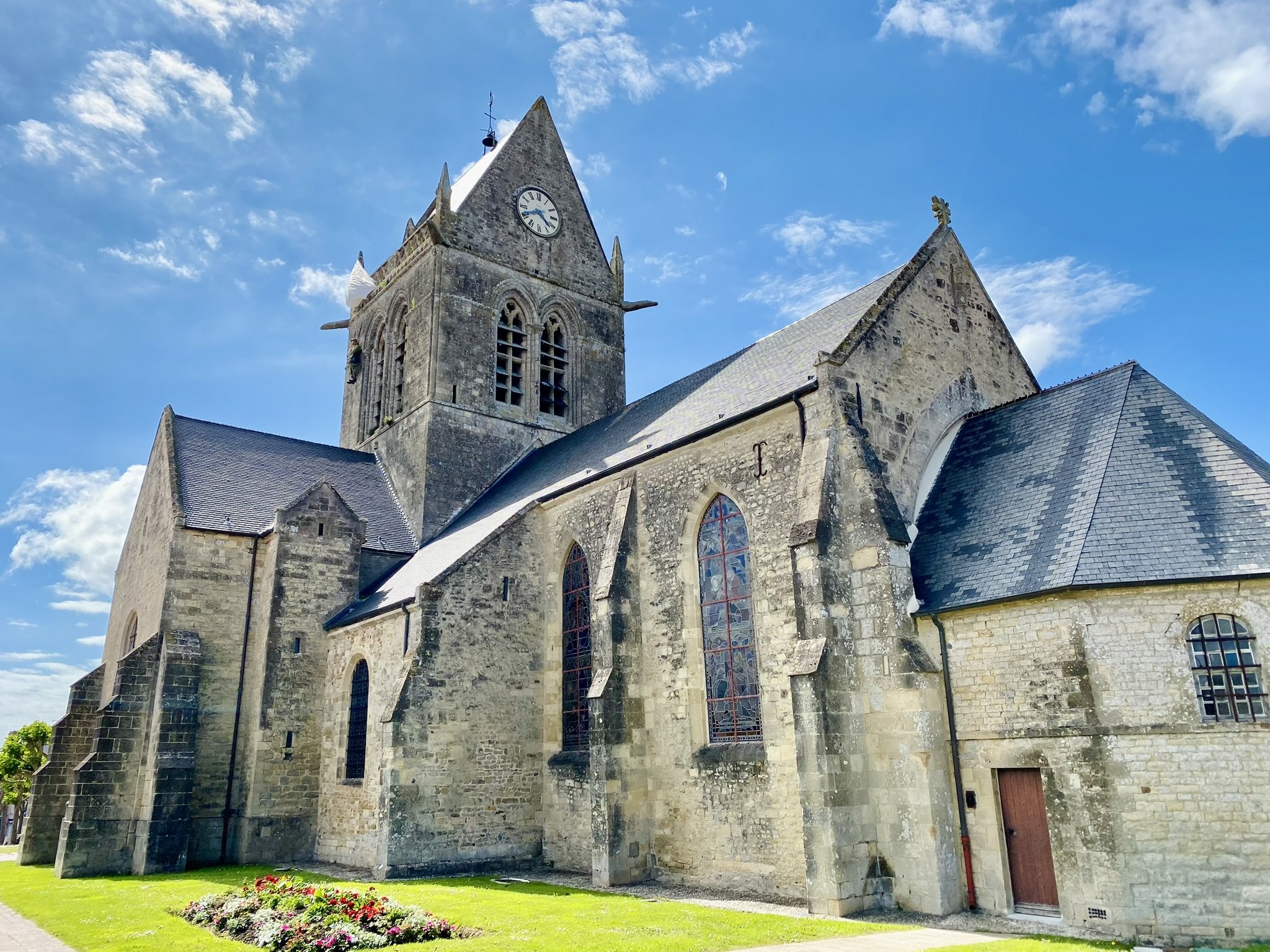





Day 5: Utah Beach to Mont-Saint-Michel
Hotel: Hôtel Mercure Mont Saint-Michel
Total Driving Time: 2 hours and 20 minutes
We started our day with an amazing breakfast at our BnB in Grandcamp-Maisy. Our hosts were so hospitable and brought us a delicious french breakfast right to our room, where we enjoyed the amazing views out to the sea. One of the most fascinating things to watch was the tide. The tide seemed to fluctuate drastically between high tide and low tide. After enjoying a leisurely morning, we set off for another day of adventure.
Stop 1: We took a quick 10 minute drive east to explore the Pointe du Hoc, a dramatic clifftop where U.S. Rangers scaled the cliffs under heavy fire. There is a ranger museum and exhibits that explain the unbelievable feat the Rangers attempted here. There is a small beach path and memorials where you can wander and explore this beautiful and hallowed area.
Stop 2: We took another quick 10 minute drive back west to see the Maisy Battery, an old German fortification battery with a few turrets and artillery still standing. This is a great area for a quick break to wander around the old battlements and get up close to the old artillery strewn across the old battery. There are a few bunkers that are crumbling but still in tact that you can explore as well. This is worth a quick stop if you have time.
Stop 3: Our last WWII stop was at Utah Beach. This was about a 30 minute drive from Maisy Battery. Utah Beach was one of the two US landing beaches and was located the farthest west. The objective was to create a beach head to quickly supply troops and materiel into occupied France as well as cut off the German army from reinforcing the port city of Cherbourg, capture the port city, and connect with the airborne troops. This wide swath of beach was a great place to wander and reflect on the sacrifices made on D-Day. There are quite a few monuments and memorials to visit while at Utah Beach. We highly recommend visiting the Utah Beach Landing Museum. This museum contained great exhibits such as the amphibious landing craft, tanks, artillery, and planes. This is definitely worth a visit to gain a better understanding of the battle plans, logistics, and manpower that went into making this landing a success. After the museum, we took a little more time to reflect at the beach before heading into our next “phase” of the trip.
Stop 4: We took a nice afternoon drive, roughly an hour and half southwest to the iconic Mont-Saint-Michel. Mont-Saint-Michel is a tidal island best know for its city walls and impressive Abbey. The commune is still inhabited and contains tons of small shops, restaurants, and sights to see on the island. This is a very important cultural and religious site in France.
First, we stopped in the little town of La Caserne right outside of Mont-Saint-Michel to do some quick shopping and grab a quick bite to eat. We stayed in the town of La Caserne at the Hôtel Mercure Mont Saint-Michel. This hotel was in a perfect location. We were easy waking distance to Mont-Saint-Michel, but the hotel also offered a shuttle that dropped you off right at the entrance. We opted to walk and take in the beautiful views as we approached the Mont. This made for some amazing picture taking opportunities. We arrived during low tide and enjoyed walking around the outside of the imposing walls. We then entered the town and strolled along the empty streets. Mind you, we visited during COVID and the streets were empty. This isn’t normally the case, but going in the evening will normally allow more breathing room and opportunity to enjoy the beautiful island commune with less tourists. After wandering around, we headed back to our hotel.
We would highly recommend staying at the Hôtel Mercure Mont Saint-Michel. The proximity to the Mont makes this hotel worth it for the location alone. Additionally, the hotel has a wonderful restaurant on site as well as a bar, where you can enjoy an evening cocktail or glass of wine outside on the terrace. If you want to explore some other options close by, we would recommend checking out:
Pro Tip: If you want a more personalized experience or want to check out some cool experiences like seeing the quick sand, check out these tours from Viator.




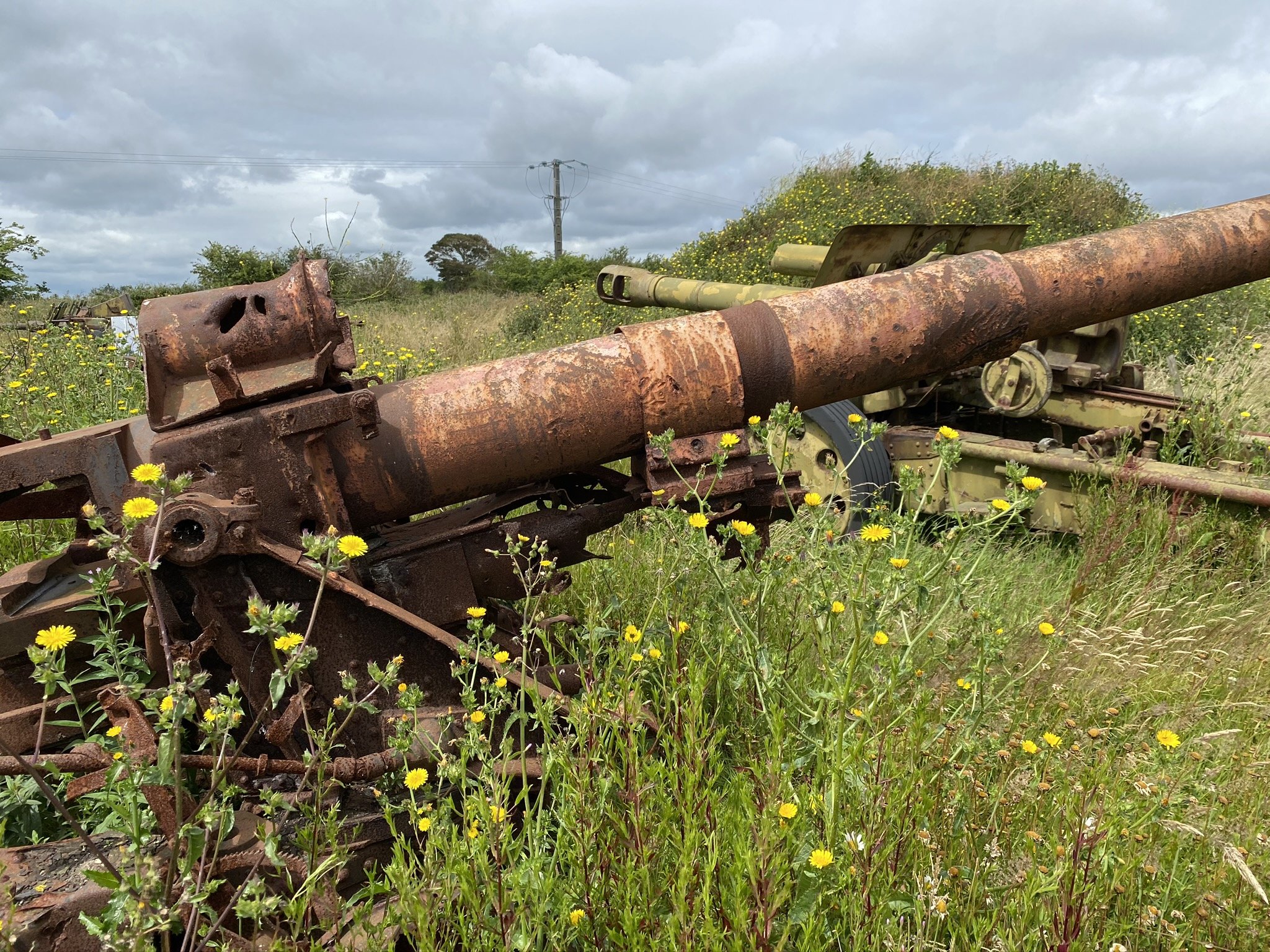




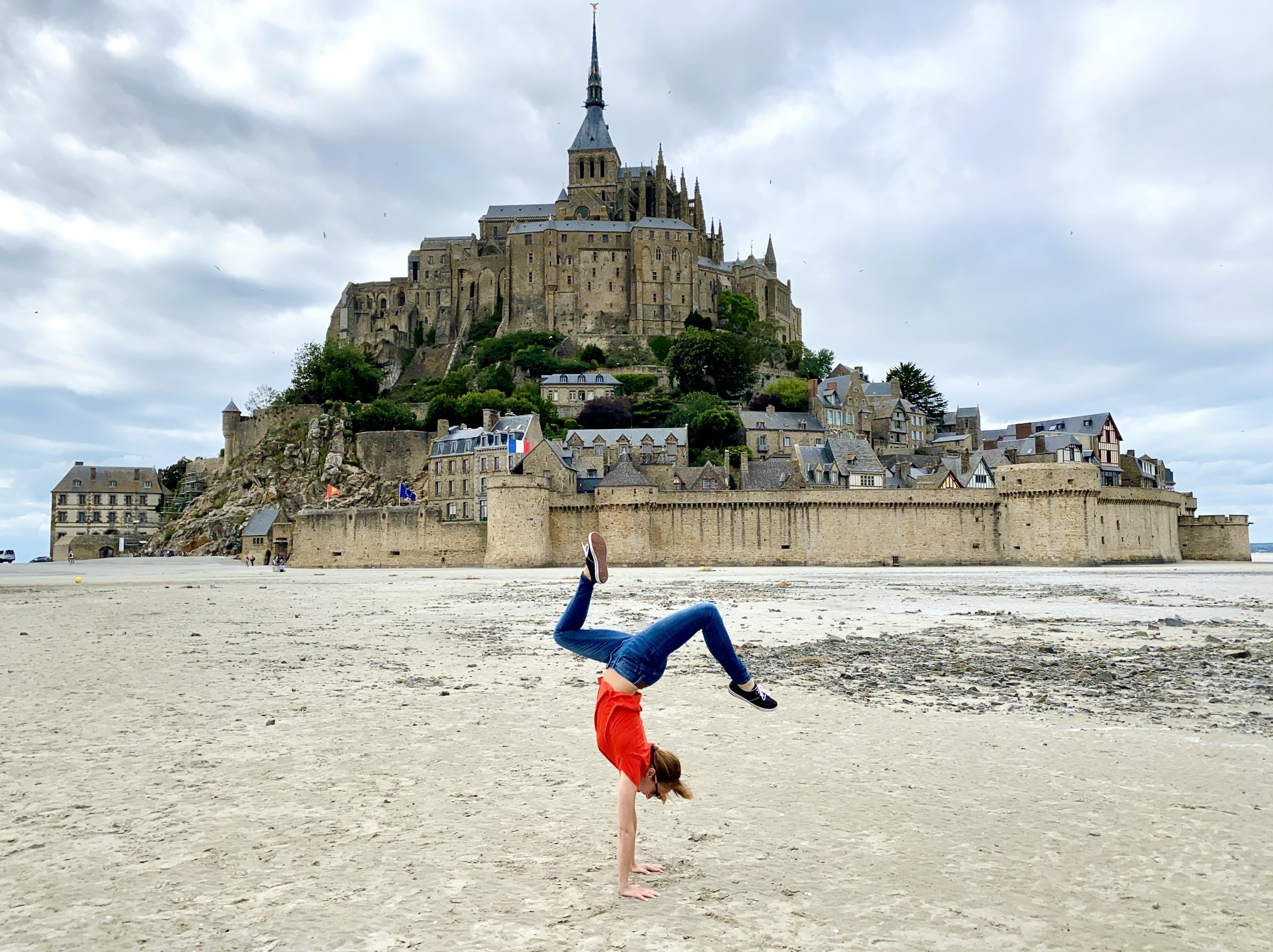






Day 6: Explore Mont-Saint-Michel & Drive to Saint-Malo
Hotel: Escale Oceania Saint Malo
Travel Time: 45 minutes
This day was another day full of exploration and admiring the island. We spent all morning exploring and taking pictures of the beautiful Mont-Saint-Michel. After taking more pictures outside of this picturesque island, we made our way back inside the wonderful city with its narrow streets and medieval charm. One of our favorite things was taking a tour of the abbey. The self paced tour gave us an opportunity to explore this medieval abbey inside and out. When you make it to the top of the abbey you are provided impressive views of the surrounding sea providing the perspective of why this island was so difficult to conquer back in medieval times. We spent the rest of the morning exploring the city streets and shops while admiring the expansive views from the island. After shopping, lunch, and of course, more pictures we departed for Saint-Malo.
Note: if you are short on time, we recommend taking a guided tour of Mont-Saint-Michel. Take a look at Viator or Getyourguide for some great options!
Stop 1 (and only stop for the day): For our first and only stop of the day we drove 45 minutes to the coastal town of Saint-Malo. Saint-Malo is most famous for two things: its city walls and its large waves that crash against the sea walls. We highly recommend visiting this French port city. Saint-Malo has a beautiful boardwalk and beach walk that stretches for miles. Head into downtown and walk along the old fortress and city walls while admiring the crashing waves. After wandering around, we stopped to grab a beer and gelato before heading into the shopping district. We spent the majority of the day taking in the Brittany coast, strolling along the boardwalk, and enjoying the old city. After a long day of exploring, we had some fantastic seafood at Restaurant Les 7 Mers. This was a great day to truly take in the beauty of the old northern French coast.
We highly recommend staying at the Escale Oceania Saint Malo. This beachfront hotel is located right on the boardwalk of Saint-Malo. We really enjoyed the proximity to the old town along with the amazing views of the beach. The rooms were cozy and we enjoyed having breakfast outside on the terrace. If you want to consider some other options, check out:
Saint-Malo was our last official stop on the Normandy beaches portion of our road trip. This itinerary offered history, beautiful views, and reflection time. From Sain-Malo we began our journey for the second half of our trip to explore the oppulent chateaux and the rolling hills of the Loire Valley. For a detailed itinerary see our Loire Valley road trip guide (Coming Soon!).











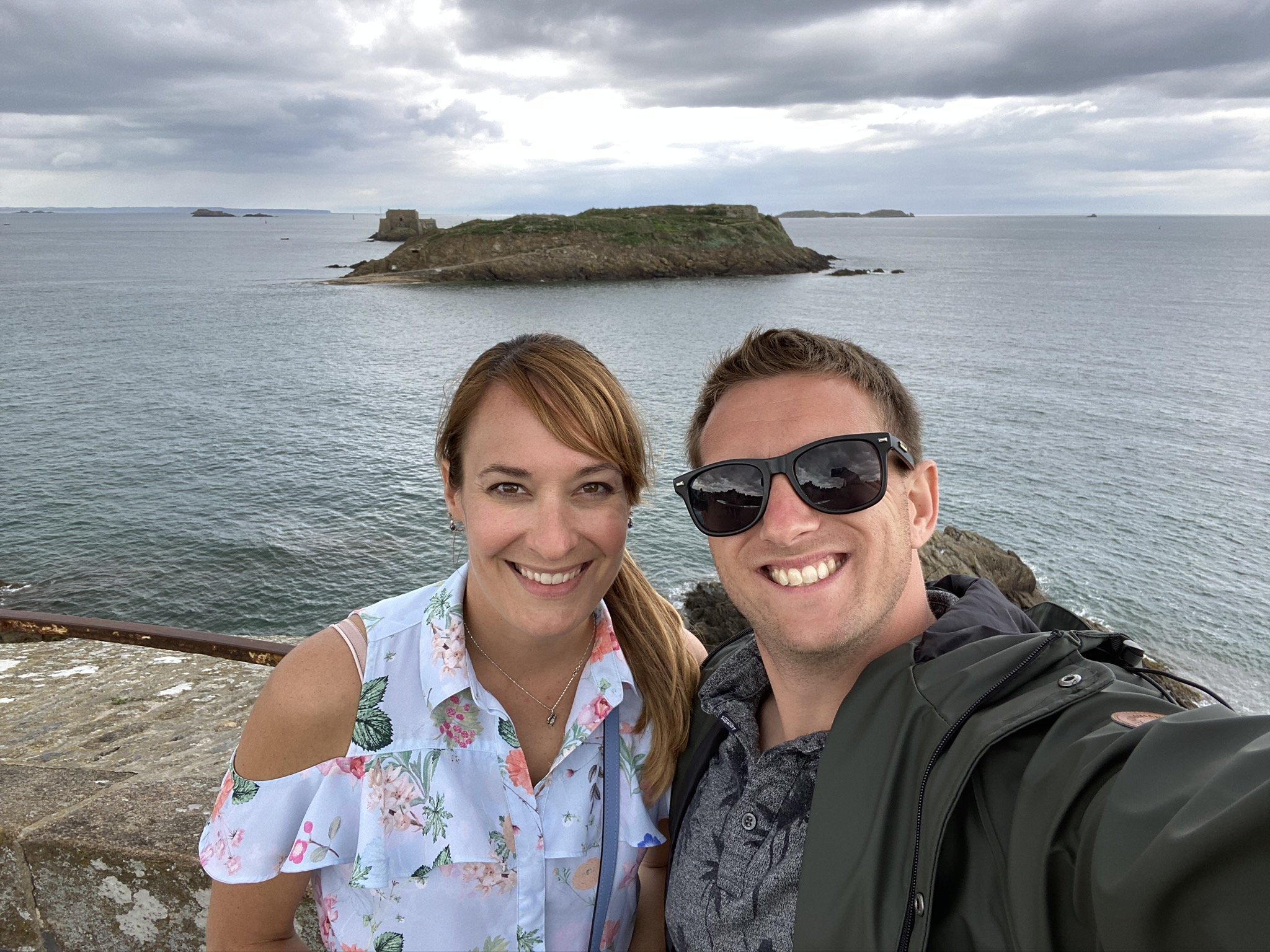
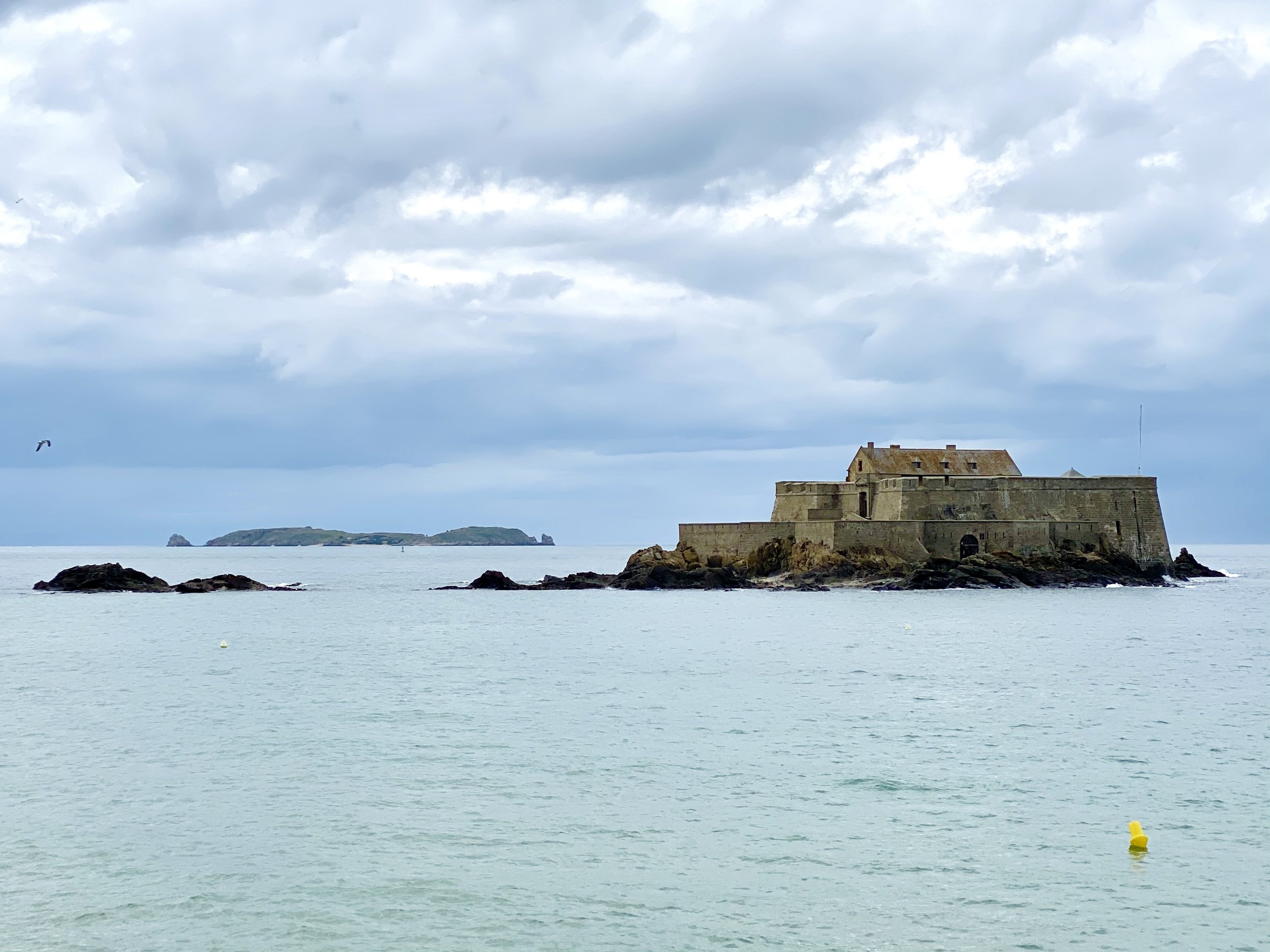









Historical Points of Interest:
D-Day Beaches: Omaha and Utah are must-visits for their powerful WWII history.
American Cemetery: A sobering and moving tribute overlooking Omaha Beach.
Pointe du Hoc: Site of one of the most daring assaults of D-Day.
German Bunkers: Preserved fortifications that offer a glimpse into the German defenses.
Musée du Débarquement: Chronicles the planning and execution of the D-Day landings.
Airborne Museum: Immersive exhibits that bring the Normandy landings to life. This was one of our favorites!
Mont-Saint-Michel: A marvel of medieval architecture and centuries of pilgrimage history. Some of our favorite views in all of northern France.
Bayeux Tapestry: A beautifully preserved, 230-foot-long embroidery telling the story of the Norman conquest of England in 1066. A can’t miss in Bayeux!
Sainte-Mère-Église: The first town liberated by Allied forces on D-Day.
German Artillery Battery
Hidden Gems:
Honfleur: We think about this city often. The beautiful harbor with the half-timbered buildings. This transported us back to medieval France. The town is less touristy than larger cities, full of charm and excellent food.
Palais Bénédictine in Fécamp: A stunning palace building where the famous liqueur was born. Even if you aren’t a fan of the herbal liqueur of the namesake the palace is worth a tour.
Grandcamp-Maisy: A quieter base for exploring the D-Day sites and a great place to enjoy watching the tides roll in and out between Utah and Omaha beaches.
Bayeux: Much more than just the tapestry museum, this town had lovely charm with the river running straight through the old town and a beautiful cathedral to explore.
Palais Bénédictine in Fécamp
Food & Drink Highlights:
Normandy seafood: Especially mussels and oysters.
Camembert and Livarot cheeses from local markets.
Cidre and Calvados: Apple-based drinks that define the region.
Galettes and crepes from Honfleur and Bayeux.
Seafood dish in Saint-Malo
Where to Stay:
Fécamp: Waterfront boutique hotels or B&Bs.
Hôtel Le Grand Pavois (This is where we stayed)
Arromanches-les-Bains: Stay in town for beach access and museums.
Les Villas d'Arromanches, Les Collectionneurs (This is where we stayed)
Or Try Bayuex:
Or try Caen:
Grandcamp-Maisy: Peaceful countryside inns.
Chambres d'hôtes Les 4 Vents Pointe du Hoc - Landing Beaches (This is where we stayed)
Chateau de Grandval (Sainte-Mère-Église)
HÔTEL DU 6 JUIN (Sainte-Mère-Église)
Mont-Saint-Michel: Book early if staying on the island.
Hôtel Mercure Mont Saint-Michel (This is where we stayed)
Saint-Malo: Stay inside the walled city for a magical evening experience or right on the oceanfront for gorgeous views.
Escale Oceania Saint Malo (This is where we stayed)
Advice, Tips & Tricks:
Pack layers: Coastal weather can change quickly. Even in June and July the rain would roll in pretty quickly and temperatures would drop. While the weather was very pleasant in the 70s F (22 -24C), temperatures could drop quickly down to the low 60s F (17-18 C). A lightweight jacket or pull over is recommended. Additionally, the coast can get very windy, so a wind breaker or jacket of some kind is strongly recommended.
Pre-book major sites like Mont-Saint-Michel Abbey, especially in the summertime when slots can book up quickly!
Give yourself time: Don't over-schedule — allow time for local markets and spontaneous stops. Some of our favorite memories were the unscheduled ones and the ones where we could truly take time, reflect, and enjoy our surroundings.
Parking: We recommend planing out parking areas in advance on Google Maps and finding backups just in case. It might be better to take advantage of parking further away as many historic areas have remote lots with shuttles (especially Mont-Saint-Michel).
Download offline maps in case of poor cell reception in rural areas. We always recommend downloading offline maps as you never know when you might lose service or be in an area with bad reception.
A Glimpse Ahead: The Loire Valley & Its Legendary Châteaux After exploring Normandy’s beaches and coastlines, we continued our journey through France’s fairy-tale heart: the Loire Valley. Known as the “Garden of France,” the region is home to more than 300 châteaux and has been a retreat for French royalty and nobility since the Renaissance.
Loire Valley History in Brief:
The Loire Valley flourished during the 15th–17th centuries, when French kings and aristocrats built elaborate châteaux along the Loire River.
These castles showcase a blend of Gothic, Renaissance, and classical architecture.
Key châteaux include Château de Chambord, Château de Chenonceau, Château de Villandry, and Château de Blois.
The valley is now a UNESCO World Heritage Site for its cultural landscape, history, and architectural legacy.
This road trip was awe-inspiring and one we reflect back on often. Standing on Utah and Omaha beach was overwhelming, thinking about the sacrifices made on D-Day. The entire Normandy beach region contains a multitude of amazing museums, artifacts, and relics from World War II.
Continue on for Part 2 of our journey as we dive into the romantic heart of France: the Loire Valley and its stunning châteaux trail(or check out how to choose your own Chateaux route)! Or check out the full itinerary with our road trip map.
View of the Etretat Arch
Disclosure: This post contains affiliate links, which means we may earn a small commission (at no cost to you) if you book or purchase through our links. We only recommend things we’ve personally used and loved. Thanks for supporting our blog!
✨ Ready to plan your own Normandy French road trip escape?
Check prices for hotels in Normandy or browse tours around Normandy to get started!






